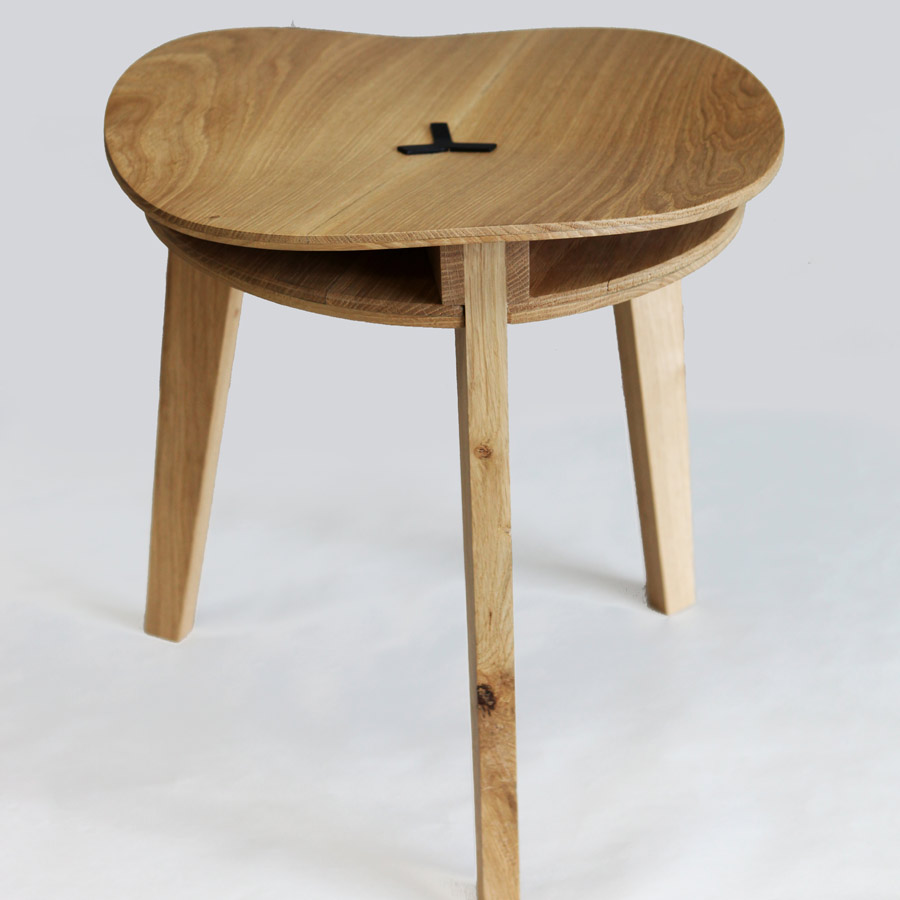Michael Zelehoski’s New Order
Large-scale sculptures made from the likes of collapsed electrical towers that play with perception, now on view in NYC
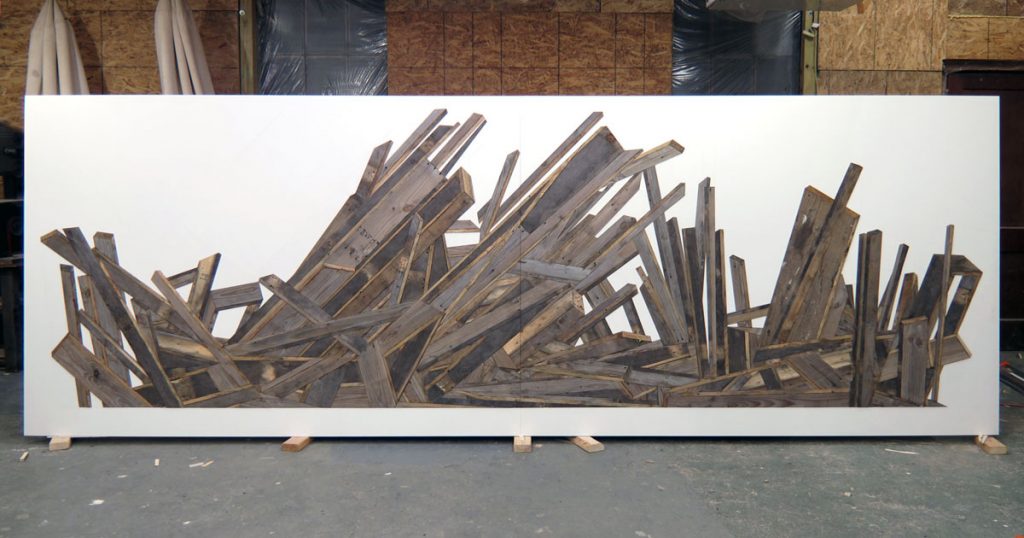
by Janine Stankus
In the converted garage space of his Beacon, NY studio, artist Michael Zelehoski and his brother guide a 9’x5′ plywood slab through a table saw, carefully slicing the bottom edge. The plywood is actually pieced together around fragments of 21 different shipping pallets, which are arranged to create the illusion of a three-dimensional stack that dissolves into nothingness—or rather, carefully configured blank space. “I’m not sure if it’s too much,” Zelehoski muses, “I might have to glue that on and do it again.”
The piece is part of “New Order” (Zelehoski’s just opened solo exhibition at NYC’s Mike Weiss Gallery) which features several of these large-scale sculptures that play with perspective, perception and objecthood.
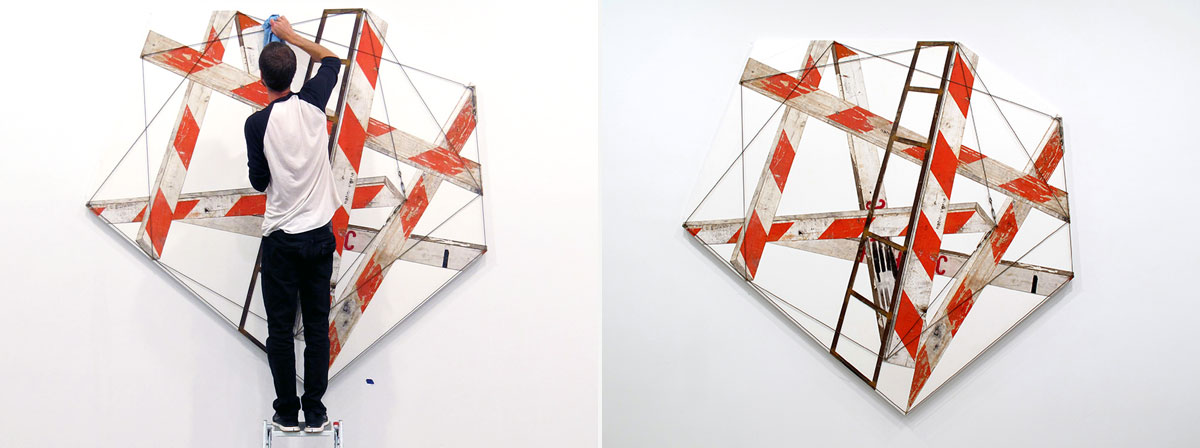
These pieces represent the evolution of body of work that’s been developing for a decade, since Zelehoski first began “flattening” found objects (which first caught our eye back in 2010). Chairs, ladders, police barricades, graffitied signs, even an abandoned ice house—he breaks them down, then reconstructs and recontextualizes them in the two-dimensional plane. The effect is manifold. By controlling the context, Zelehoski foregrounds objects typically relegated to the fringes of our reality. While he once focused on rendering figures—mostly women—Zelehoski finds activating these real-world objects more compelling. Pallets, for example, convey most of the things we live with, but are rarely acknowledged as more than a means. “To reveal them as ends in themselves and as objects of formal value is more interesting and more challenging than trying to make a hot woman look hot,” he says.
When you look at an object, even though it’s in flux and your relationship to it is changing constantly, your mind is creating order in that chaos.
Zelehoski isn’t simply bringing the banal to bare, however—by creating illusions that cause us to grasp at that third dimension, he explores not just what, but also how, we perceive. “When you look at an object, even though it’s in flux and your relationship to it is changing constantly, your mind is creating order in that chaos,” he explains. The New Order pieces explore this process depth. Fragmented structures and incoherent angles cause observers to recognize their inherent ordering principles by purposefully evading them. “If you resolve the composition, you only need to look at it once,” he notes. “Whereas if it’s unresolved or in flux or challenging, you could look at it forever.”
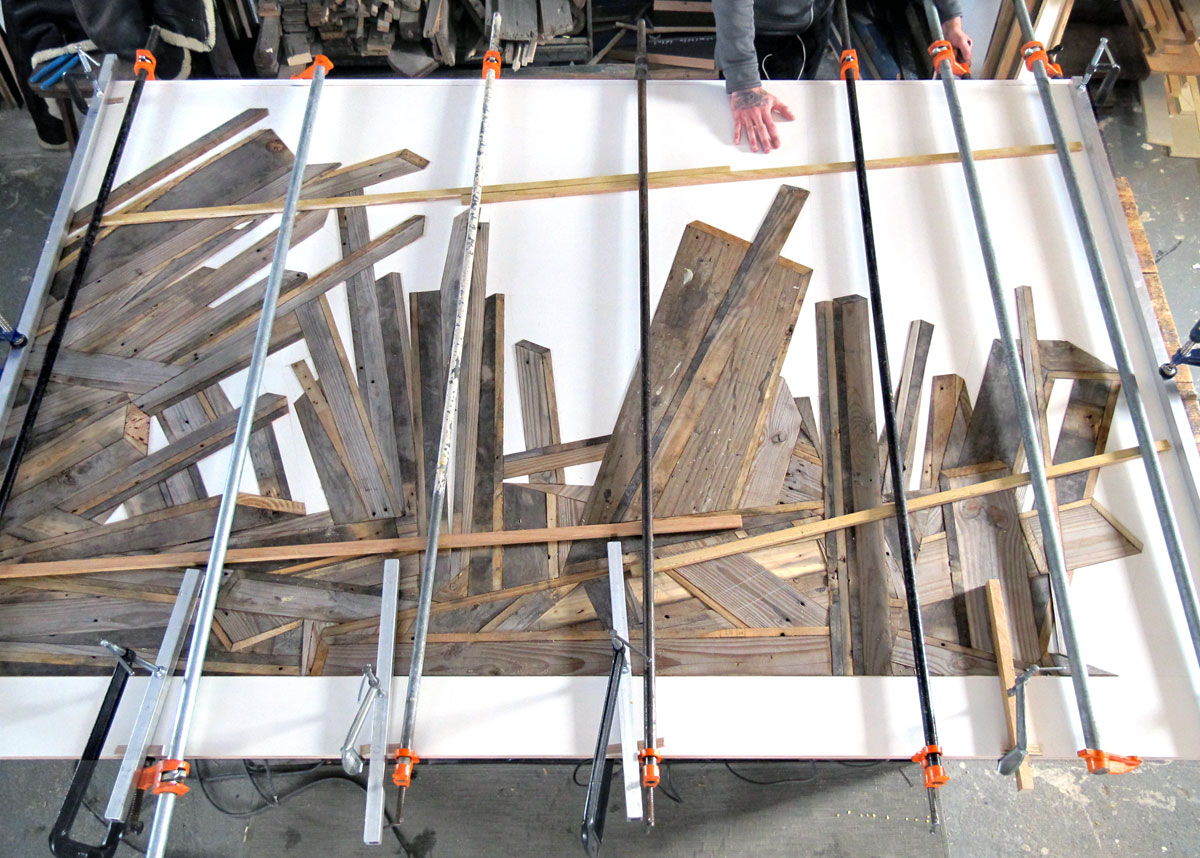
The cognitive work Zelehsoki calls to mind is mirrored his artistic process, which is itself ordered chaos. His materials are mostly arbitrary: objects that call to him from lots, dumpsters or the side of the street. In his studio, he meticulously dissects and reassembles them. Mathematics never enters the equation—his is a puzzle process that involves cutting and recutting, gluing and re-gluing and countless, crisscrossing clamps. A work in progress resembles a Frankenstein figure strapped to the lab table and Zelehoski (in his protective goggles) might likewise be compared to the mad scientist.
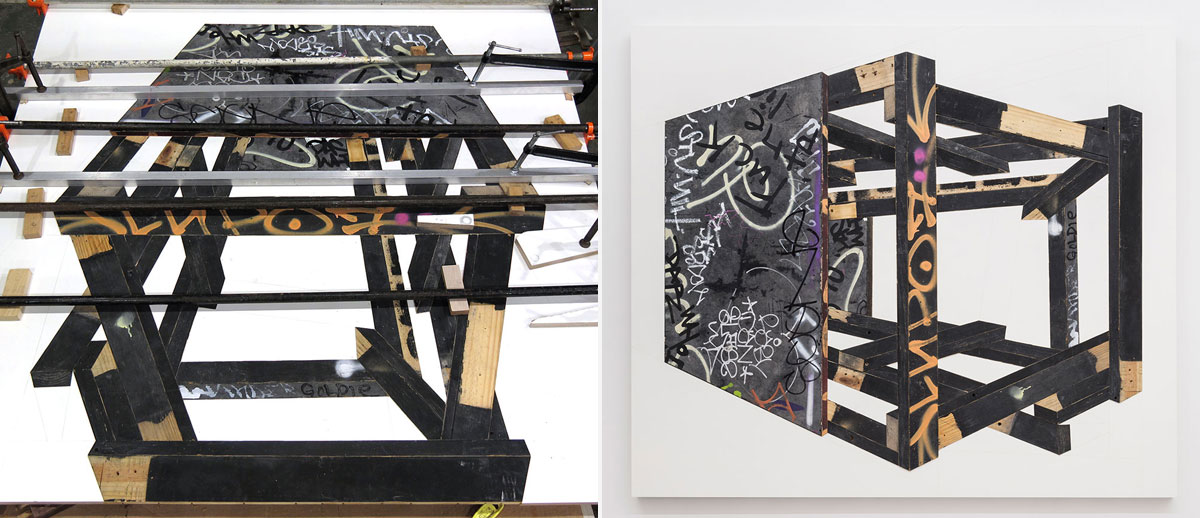
The artist’s obsession with his own vision is evident upon closer examination of the works—every reconfiguration revels itself in subtle cut lines. The piece he trimmed earlier, for example, was “finished” in February, and then completely rebuilt. “As long as stuff’s in the studio it’s not safe,” he tells us. This self-editing underlines how the artist’s role creating a new order reflects that of the viewer’s in comprehending it.
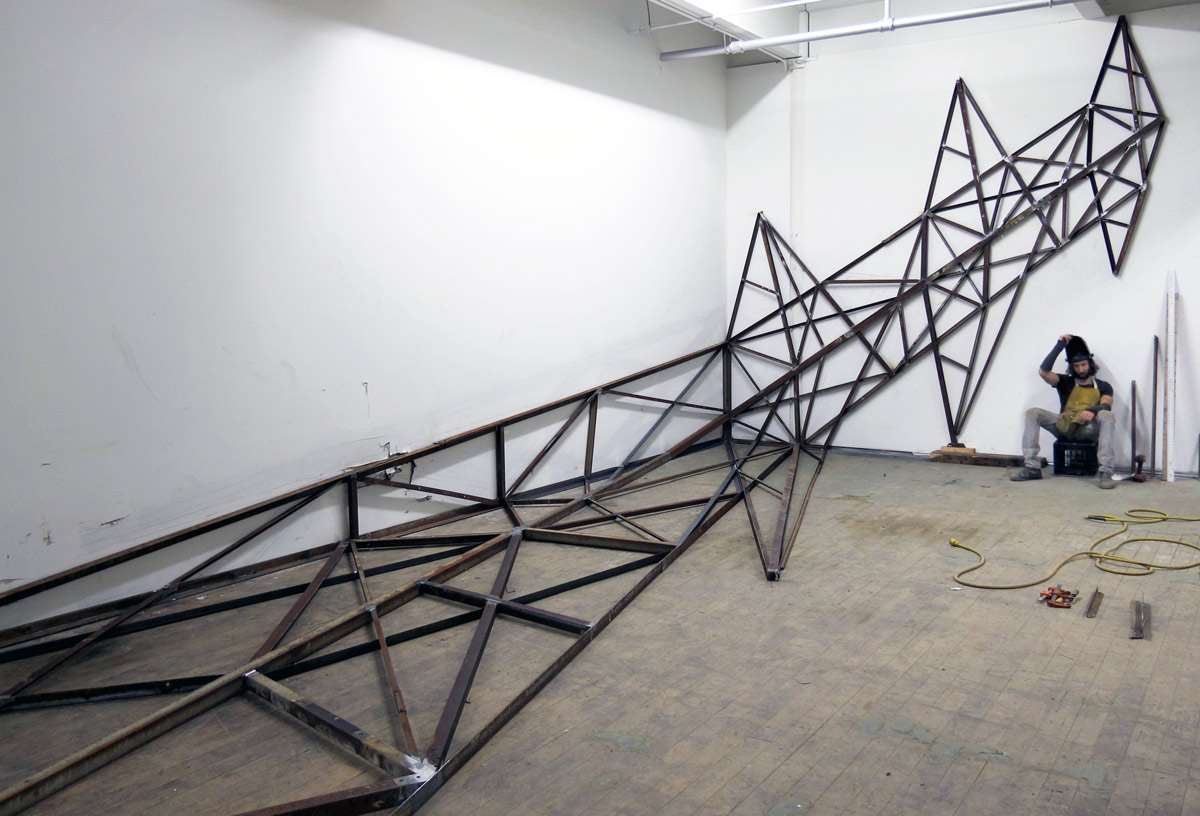
As Zelehoski’s conceptual ambitions evolve, so have his parameters. He’s recently become smitten with derelict metal frameworks. One of the most formidable New Order pieces is a collapsed electrical tower, sourced on eBay from Trilla, Illinois. Zelehoski spent two months welding its rust-ridden bones at Atlas Studios in Newburgh, NY. Breaking out of the two-dimensional plane and wrapped around the corner of the Mike Weiss gallery, this work exists somewhere between the structure and its shadow. While still paying with perspective and objecthood, “The Tower” also explores socially relevant themes such as the evolution of industry and technology, with an obvious nod towards our energy futures.
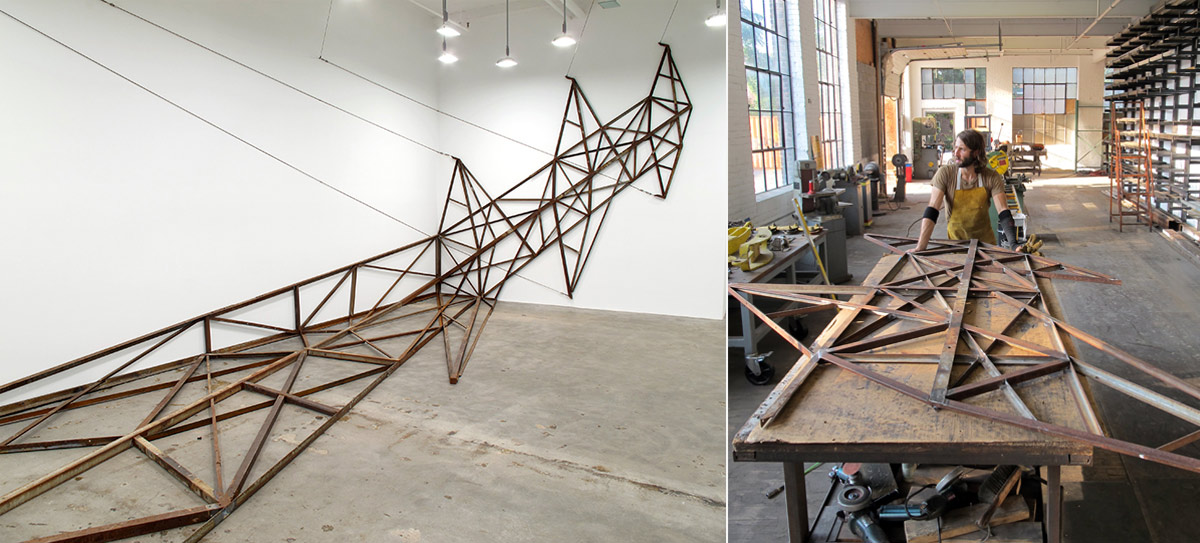
“The Tower” is the work that literally ties together his current show: a cable anchored at the entrance snakes through the the gallery and connects to the imposing, culminating structure.
“New Order” is open now through 20 June 2015 at Mike Weiss Gallery, 520 West 24th St, NYC.
Images courtesy of Michael Zelehoksi

